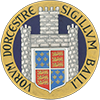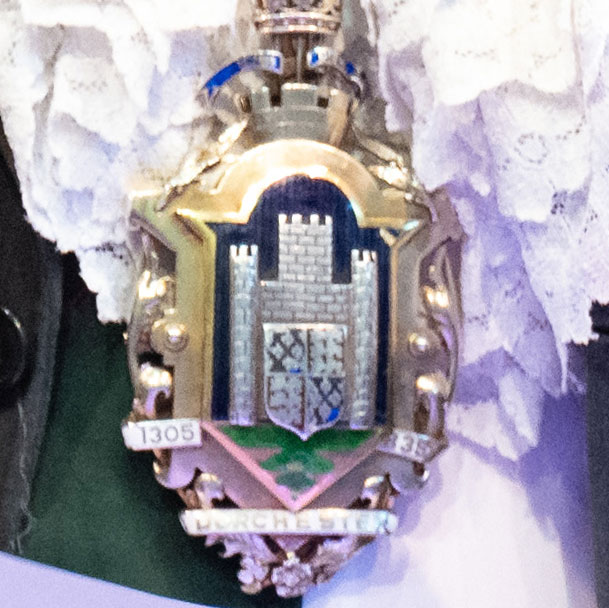
The Mayoral Chain
The Mayor's Chain was presented to the town in 1874 by then-Mayor E Burnett and bears the dates 1305 and 1835. 1305 is significant because that is when King Edward I granted a charter authorising the building of a county gaol in Dorchester; this officially confirmed Dorchester's position as County Town, although Dorchester had been an important settlement for many years before that. 1835 marks the passing of the Municipal Corporations Act which created local government in a form even vaguely recognisable today.
Alderman Gregory John Gregory Gregory was a major local benefactor (the fountain in the Borough Gardens is properly known as the ‘Gregory Memorial Fountain'). He was Mayor of Dorchester 5 times and the photograph shows him wearing the Mayor's Chain in 1884.
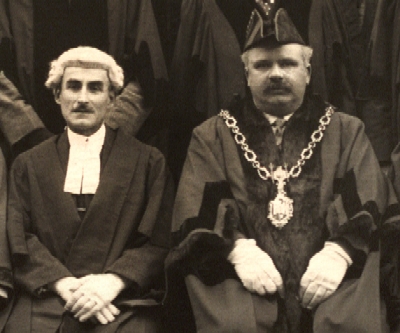
The Mayoralty
The position of Mayor of Dorchester dates back to 1629 when John Parkyns was elected as the first Mayor: Full list of Mayors.
Today the Mayor is a serving councillor, with the post being appointed based on length of service on the Council; when a councillor gets to the top of the list they may choose to be put forward for election as Mayor and when they have served their year of office they move to the bottom of the list.
But it has not always been like that. It was not until the passing of the Municipal Corporations Act in 1835 that the Council existed in anything like a form that we might recognise today and even then the Mayor could be absolutely anyone until the Local Government Act 1933 came into force in 1935.
There was an old saying in Dorchester that things were never better than when Freddie James was Mayor; the photograph shows Freddie wearing the Mayoral chain, with Town Clerk J Adrian Hands who served from 1922 to 1949. The photograph is a detail taken from a 1935 photograph of Dorchester Corporation.
The position of Town Clerk also dates back to 1629: Full list of Town Clerks.
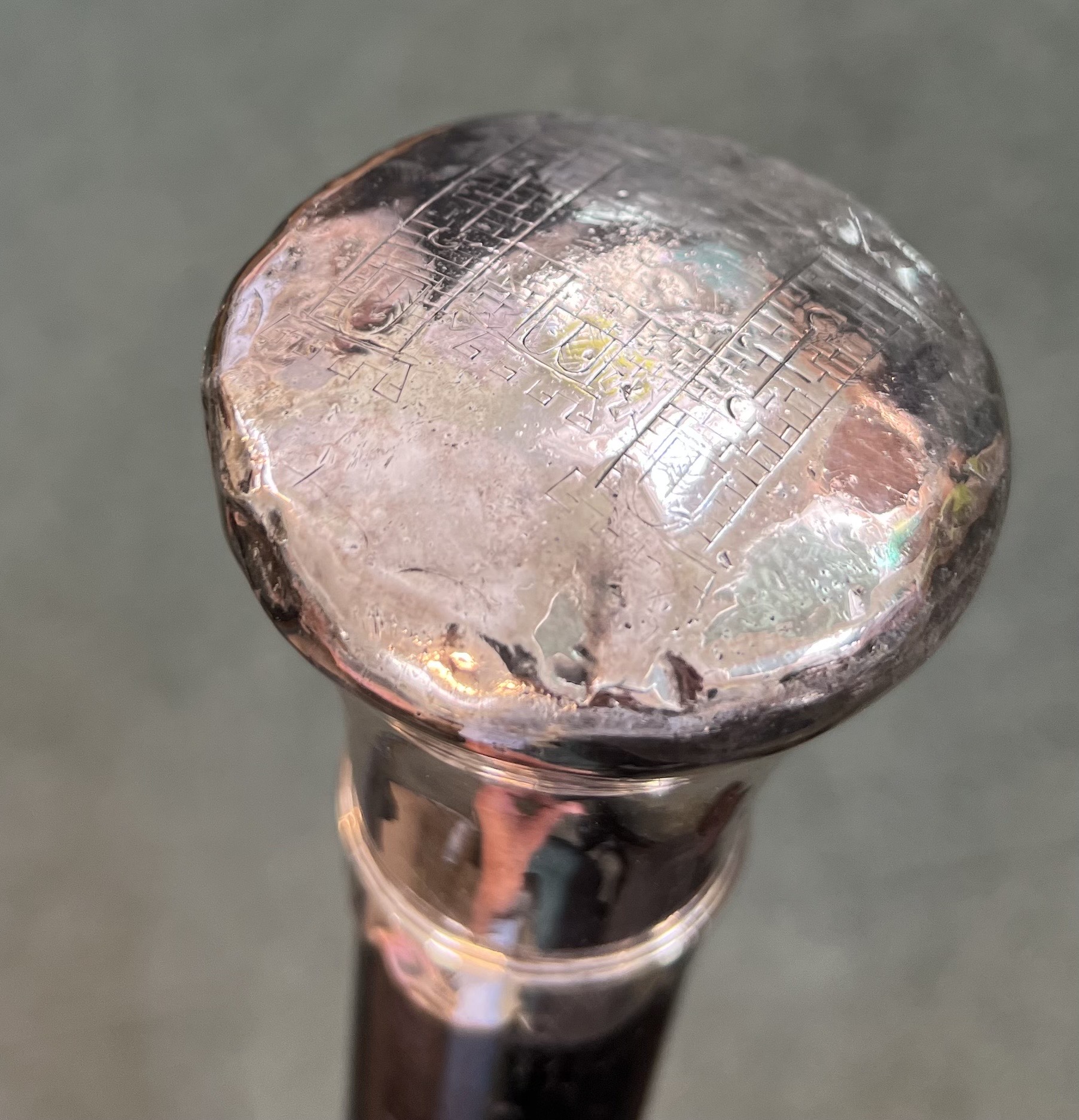
The Beadle Pole
Historically the Beadle was the parish constable and the pole was his symbol of office, as well as a useful weapon for chastising offenders!
Dorchester's Beadle Pole is 179.5 centimetres (5 feet 10¾ inches) long and is reputed to date back to the 13th century, although it is unlikely that it really does! It is of some age, though, as the drawing of the style and form of the town seal engraved on the silver head of it shows.
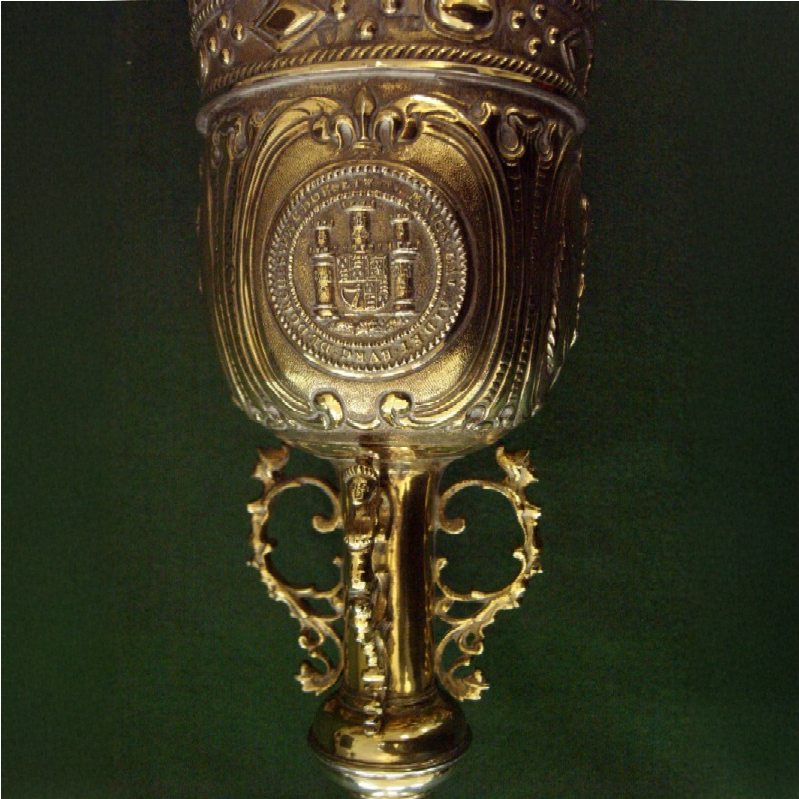
The Maces
The use of the mace as a symbol of authority dates back to the 11th or 12th century, when a club was a common weapon. Knights started emblazoning their coats of arms on the handle knobs of the clubs which their heralds carried so that people would know that the heralds were properly authorised, and the symbol became more and more ornate, even when the club fell out of use as a weapon.
Dorchester's silver gilt maces carry the date 28 December 1728 and follow a pattern decreed by King Charles I in 1649.
See the face of the mace representing Dorchester;
See the face representing England;
See the face representing Scotland;
See the face representing Ireland;
See the Royal Coat of Arms inside the head of the mace.
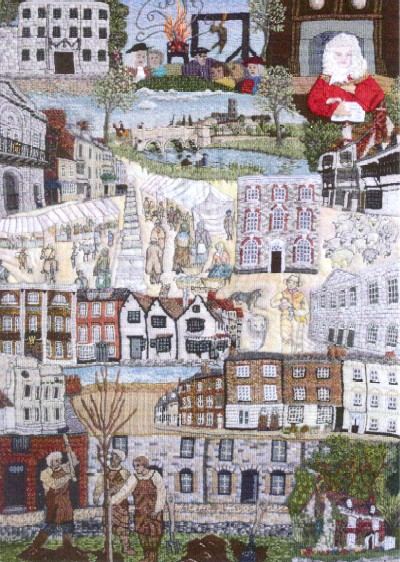
Dorchester 700 Tapestry
The Dorchester 700 Community Tapestry was designed by Suzanne Finch and embroidered, painted and quilted by local volunteers and children from Dorchester's middle schools.
It was created to mark the 700th Anniversary in 2005 of Dorchester's recognition as the County Town of Dorset in the Charter of King Edward I.
It was executed between September 2005 and December 2006 and is on permanent display in the foyer to the Corn Exchange; it can normally be seen whenever the building is open but has been temporarily removed to allow for building works which are due to be completed before the end of 2025.
Please click on the button below to see the seven individual panels which make up the Tapestry.
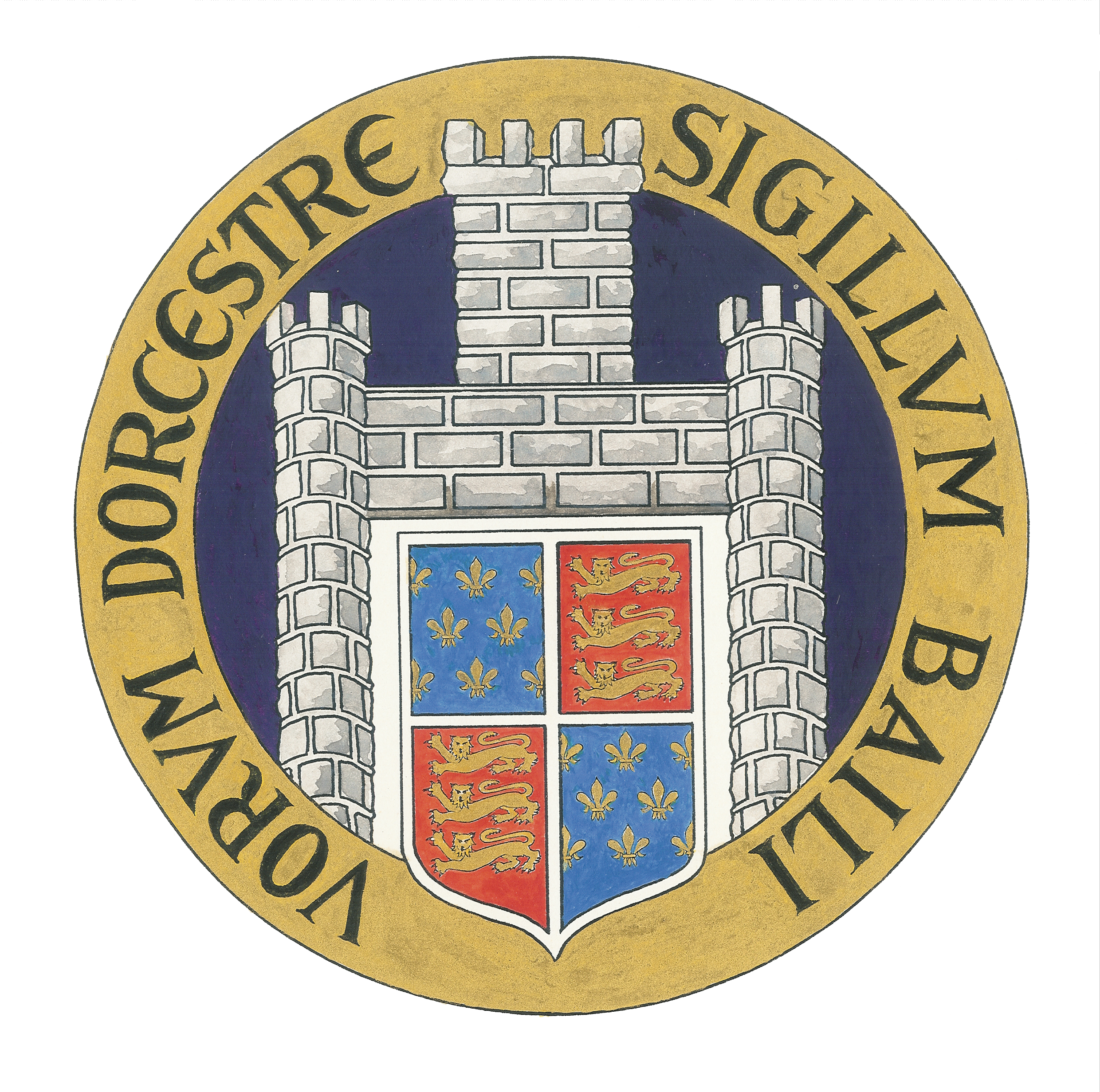
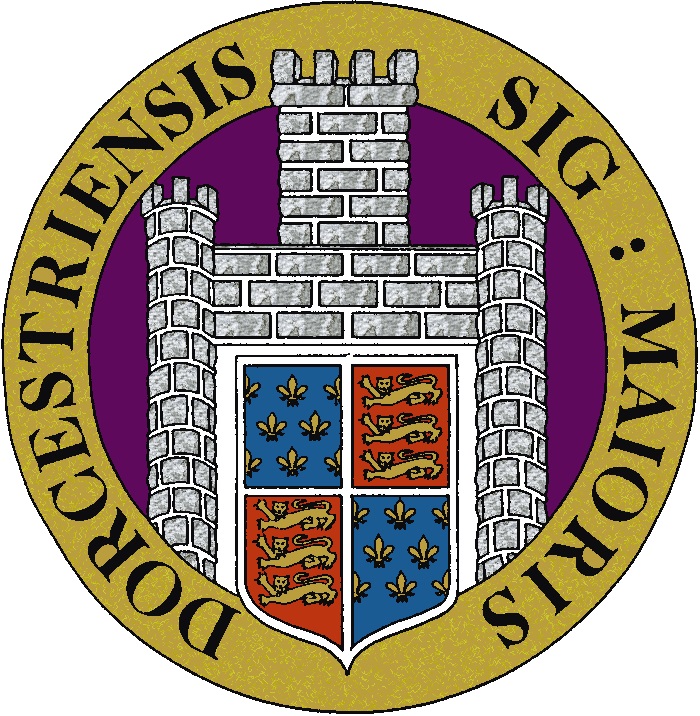
The Town Seal
The town seal represents part of the town walls, or the castle which used to stand where the prison is now, standing on a purple background, with quartered lions and French fleur-de-lys. The royal purple background signifies Dorchester's status as part of the private estates of the king since before Domesday while the lions were, apparently, on the shields of Dorset men who fought at the Battle of Agincourt on 25 October 1415.
The fleur-de-lys are unusual because they are scattered (semée is the heraldic term) rather than the more usual triangular arrangement. Dorchester's seal is the only one to use fleur-de-lys in this way, which shows that the town had the right to bear the arms of France before 1405 when they were altered by King Henry VI.
The inscription 'Sigillum Bailivorum Dorcestre' means 'The Seal of the Bailiffs of Dorchester'.
The Mayor's Seal
Dorchester is unusual in that the Mayor also has a seal, pictured here, similar to the Town Seal but with a different inscription. The Mayoral Seal no longer has any status in law but it is still used as a symbol to differentiate between matters relating to the Mayor as an individual and matters relating to the Council as a whole.
The Mayor Making Ceremony
The bare bones of what happens at the Mayor Making ceremony (more properly called the Annual Meeting of the Council) are set out in law - particularly the requirement for the election of the Mayor to be the first item on the agenda. But every council does it differently. Some will just elect their Mayor (or Chairman) at the start of an ordinary meeting and then carry on with the normal business of the meeting. Others, like Dorchester, make more of it.
Dorchester has been the county town since at least 1305 and has elected a Mayor since 1629, with the Mayor of Dorchester playing an important role in the social and cultural life of the town.
The Mayor Making ceremony is one of a relatively small number of occasions each year when the Council processes with full insignia. The maces are carried by two mace bearers with tricorn hats and gold trimmed capes, the Mayor, Councillors and Town Clerk all wear their robes (the purple robes, which were worn by aldermen until 1974, are now worn by the six longest-serving councillors) and the Beadle brings up the rear.
When the Mayor has been elected the new Mayor receives the robe and chain of office from the previous Mayor who routinely becomes Deputy Mayor. The Mayoress or Mayor's Escort also receive their insignia.
The new Mayor makes a speech outlining the way in which they intend to carry out their mayoral duties. The outgoing Mayor also makes a speech, reviewing the highlights of their year in office, before the Annual Meeting is adjourned.
The meeting is followed by a reception for civic dignitaries and the Mayor's guests. The Annual Meeting, with its formal and routine business, continues on the following evening.
Dorchester has a long tradition of wearing civic insignia. The photograph below was taken in the Corn Exchange and shows the Corporation (as the Borough Council was sometimes known) in 1935. The councillors and the Town Clerk are dressed more or less as they do today.
